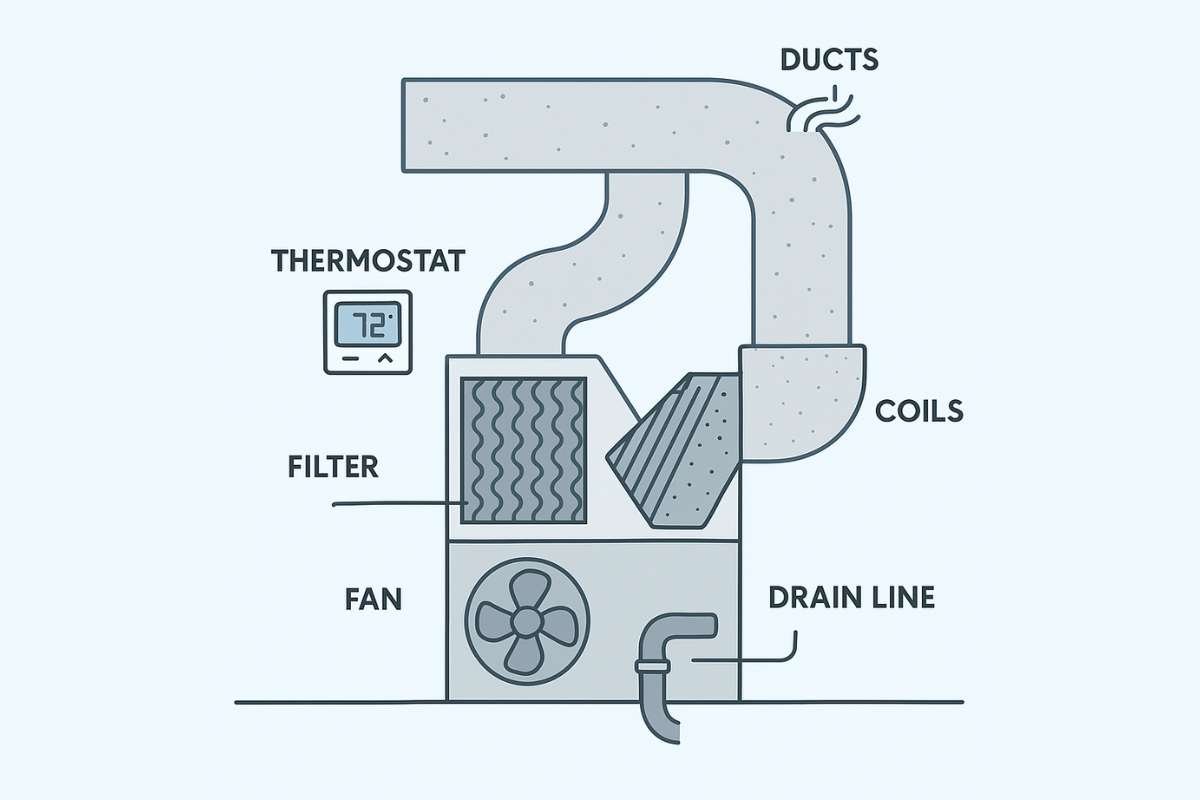Are you working on a small residential job or perhaps busy with a large-scale commercial project? Then you’ll surely agree that having the appropriate machinery can significantly impact your efficiency, costs, and overall outcomes.
This comprehensive guide will help you and your construction business decide on the best earthmoving equipment. Read on to learn more!
Understanding earthmoving equipment
According to hammerhire.com.au, earthmoving equipment refers to heavy-duty machinery designed to move, remove, and relocate large quantities of earth, soil, and other materials. They’re essential in various construction activities such as excavation, grading, trenching, and mining.
Excavators, bulldozers, and loaders are common types of earthmoving equipment. Each one is designed for specific tasks and purposes in construction and engineering projects.
Types of earthmoving equipment

Earthmoving equipment encompasses a wide array of heavy machinery designed for various tasks in the construction and landscaping industries. Some of the most commonly used equipment include:
1. Excavators
These powerful machines dig trenches, foundations, and other excavations by attaching a bucket to a boom and dipper arm.
2. Bulldozers
Equipped with a large metal blade, bulldozers are used for pushing large quantities of soil, sand, or debris, as well as for land clearing and grading.
3. Dump trucks
Dump trucks are primarily used for transporting loose material such as sand, gravel, or demolition debris over short to medium distances.
4. Backhoe loaders
These versatile machines combine a loader on the front and a backhoe on the rear, enabling them to perform both digging and loading tasks.
5. Wheel loaders
Similar to bulldozers, wheel loaders feature a large bucket for scooping and transporting materials, but they are mounted on wheels for greater maneuverability.
6. Skid steer loaders
Compact and nimble, skid steer loaders are perfect for working in tight spaces. They can be outfitted with a range of attachments, making them versatile for tasks like digging, grading, and lifting.
These are just a few examples of the diverse range of earthmoving equipment available, each playing a crucial role in shaping landscapes and building infrastructures.
What to consider when choosing earthmoving equipment?

Several factors should be taken into account when selecting earthmoving equipment for your construction project, as follows:
1. Project requirement
Evaluate the unique requirements of your project, such as the terrain you’ll be working on, the materials you’ll be dealing with, and the extent of the tasks involved.
2. Equipment size
Choose items that are appropriately sized for your project. Oversized equipment can be challenging to maneuver, while undersized machines may not be efficient. Choosing the right size equipment can make all the difference in productivity. For access to a variety of well-sized options, Kubota dealers Colorado offer equipment tailored to diverse project needs. This ensures you get the right tool for the job without compromise.
3. Versatility
Consider machines that can perform multiple functions. Versatile equipment can save costs and increase productivity.
4. Budget
Determine your budget and explore options that provide the best value for your investment. Consider both the purchase price and operating costs.
5. Availability of attachments
Ensure your chosen equipment has compatible attachments for various tasks. This flexibility can enhance the utility of your machinery.
Should you rent or buy earthmoving equipment?

Wondering whether to rent or buy earthmoving equipment? Here are some considerations to help you make an informed decision:
1. Pros and cons of renting equipment
Renting avoids the substantial upfront investment required for purchasing equipment, freeing up capital for other expenses. It offers flexibility to choose equipment that suits the specific needs of each project and provides access to a wide range of machinery. Additionally, rental agreements typically include maintenance and repair services, reducing your responsibility for upkeep.
However, rental costs can increase over time, making it more expensive than purchasing if you frequently need equipment. Also, what you need might not always be available, which can delay your work.
2. Pros and cons of buying equipment
Purchase can be more cost-effective over time for long-term projects or frequent use. Ownership allows you to modify and maintain equipment according to your specific needs. You’ll always have something to use when needed, preventing delays. Also, the equipment can be considered an asset on your balance sheet and may have resale value when no longer needed.
However, you’ll need a substantial amount for upfront costs, maintenance, repairs, and storage. Also, equipment value depreciates over time, potentially reducing the return on investment.
All things considered, the decision to rent or buy earthmoving equipment depends on your specific circumstances and project needs.
Maintenance and safety
Proper earthmoving equipment maintenance is essential to ensure its longevity and safe operation. Regular inspections, servicing, and adherence to manufacturer guidelines can prevent breakdowns and reduce the risk of accidents. Maintaining a comprehensive maintenance log can also help identify recurring issues and improve overall equipment performance.
Safety is paramount when operating earthmoving equipment. Training operators in safely using machinery, following all safety protocols, and using appropriate protective gear can significantly reduce the risk of injuries. Regularly updating safety training and conducting safety audits on the equipment can further enhance workplace safety.
Conclusion
Choosing the right earthmoving equipment is vital for the success of construction projects. You can make informed decisions by understanding the different types of machinery, considering project-specific requirements, and weighing the pros and cons of renting versus buying. Proper maintenance and safety practices help the equipment perform optimally, contributing to the overall success and efficiency of the project.


















